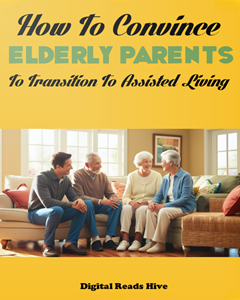Deciding to transition to assisted living is a deeply personal and significant step in one’s life.
It’s a choice that is ultimately about creating a better quality of life—one filled with meaningful connections, safety, and the right level of support for daily needs.
Whether you’re seeking a vibrant community, specialized care, or simply more peace of mind, assisted living offers a pathway to living with dignity and comfort.
From tailored services to enriching lifestyles, there’s so much to consider and appreciate.
Take a closer look at what makes assisted living a choice worth considering and imagine how it could enhance your or your loved one’s day-to-day life.
1)) Loss Of Independence
One of the most common misconceptions about assisted living is the assumption that residents lose their independence upon moving into such a community.
On the contrary, assisted living is designed to support and empower individuals to maintain as much independence as possible while offering assistance when needed.
Residents can enjoy private living spaces, make their schedules, and take part in activities that suit their interests and preferences.
The tailored care plans focus on providing help with tasks like medication management or daily routines, allowing individuals to continue living life on their terms.
Far from taking away freedom, assisted living often grants residents the ability to live more confidently and engage in a fulfilling lifestyle without the burdens or risks of managing everything alone.
This environment fosters an excellent balance between receiving necessary support and retaining individuality, ensuring each person feels respected and in control of their choices.
2)) Substandard Care Is A Myth
The notion that assisted living communities provide substandard care is a common misconception that doesn't reflect the reality of these facilities.
Residents in assisted living receive attention tailored to their unique needs, delivered by trained and compassionate professionals.
These communities prioritize creating a safe and comfortable environment where individuals can thrive while enjoying access to support services such as medication management, daily assistance, and engaging social activities.
The staff focuses on maintaining a high standard of care by staying attentive to residents' evolving needs and preferences, which promotes both dignity and independence.
Modern assisted living is designed to enhance quality of life, dispelling outdated myths about inadequate or impersonal care.
3)) Assisted Living Is Too Expensive
Many people believe that assisted living is unaffordable, but this is often not the case when considering the value it provides.
The cost of assisted living typically includes housing, meals, personal care, social activities, and maintenance, eliminating many expenses associated with living independently.
When compared to the rising costs of home care services or maintaining a private residence, assisted living offers a comprehensive solution that can be surprisingly cost-effective.
Furthermore, various communities offer different pricing structures and programs tailored to diverse needs and budgets.
By exploring all available options, families often find that assisted living is not only manageable but also a worthwhile investment in safety, comfort, and well-being.
4)) Only For Seniors In Poor Health
Many people believe that assisted living is only suitable for seniors in poor health, but this is far from the truth.
These communities are designed to support a wide range of lifestyles and abilities, offering services that cater to those who are active and independent as well as those who may need more assistance.
Residents often enjoy a maintenance-free lifestyle, allowing them to focus on hobbies, social activities, and personal growth.
With amenities such as fitness centers, gourmet dining, and engaging recreational programs, assisted living promotes a vibrant and fulfilling quality of life.
It provides a nurturing environment where seniors can enhance their physical, emotional, and social well-being while maintaining their independence.
This myth overshadows the numerous benefits and opportunities these communities offer to seniors at various stages of their lives.
5)) Lack Of Privacy Is A Myth
Assisted living communities are thoughtfully designed to balance the need for support with the importance of personal space and privacy.
Residents often have their private living areas, which can be decorated and arranged to feel like home, fostering comfort and individuality.
These spaces are complemented by common areas that provide opportunities for socialization, but participation in activities is entirely voluntary, respecting each resident's personal preferences.
Modern assisted living recognizes the importance of boundaries and personal autonomy, ensuring that residents maintain control over their routines and interactions.
With a combination of private spaces and respectful staff who understand the value of discretion, these communities provide an environment that supports both connection and independence.
6)) Limited Social Activities
Assisted living communities are bustling hubs of engagement, offering residents a wide spectrum of enriching social activities that cater to various interests and preferences.
From group fitness classes and cultural events to book clubs and gardening groups, there is always something for everyone.
These communities create spaces where residents can build meaningful connections, share stories, and explore new hobbies together.
Regularly planned outings, holiday celebrations, and creative workshops foster a sense of belonging and keep daily life lively and fulfilling.
Far from being isolating, assisted living ensures that residents are actively involved, stimulated, and supported in forming friendships and maintaining a vibrant social life.
7)) Residents Feel Isolated
Assisted living communities are designed to foster social connections and provide residents with numerous opportunities to engage with others.
With a wide range of activities, events, and group programs, these environments encourage interaction and relationship-building among residents, staff, and visitors.
Dedicated common areas, such as lounges, dining rooms, and outdoor spaces, serve as welcoming spots for conversations and shared experiences.
The focus is on creating a supportive atmosphere where individuals can maintain their independence while enjoying the benefits of companionship and a lively community.
Far from feeling isolated, residents are surrounded by peers and caregivers who genuinely care about their well-being and happiness.

Transitioning elderly parents to assisted living can be a challenging conversation, but this short guide provides invaluable advice with practical tips and empathetic approaches. Learn how to overcome common objections, foster collaboration, and ensure your loved ones’ happiness and safety. Take the next step today—purchase the e-book to gain the tools you need to make this life-changing decision stress-free and informed.
Conclusion
Fostering an environment that balances independence with community support is at the heart of creating fulfilling living spaces for individuals.
These spaces empower residents to live their lives to the fullest while knowing that assistance and companionship are always within reach.
By prioritizing care, compassion, and meaningful interactions, such communities enrich both the physical and emotional well-being of their members.
They become more than just places to live; they transform into vibrant, thriving homes where everyone feels valued and supported.
This holistic approach not only cultivates a sense of belonging but also nurtures personal growth and happiness, ensuring that every individual can truly thrive.
Download Our Free E-book!








